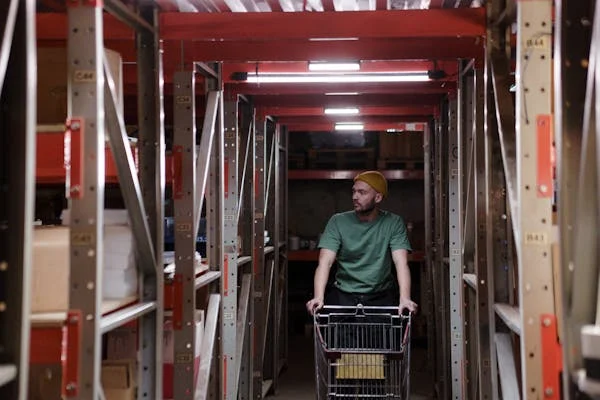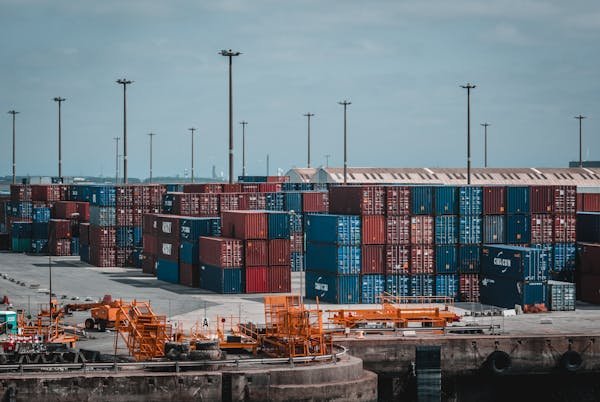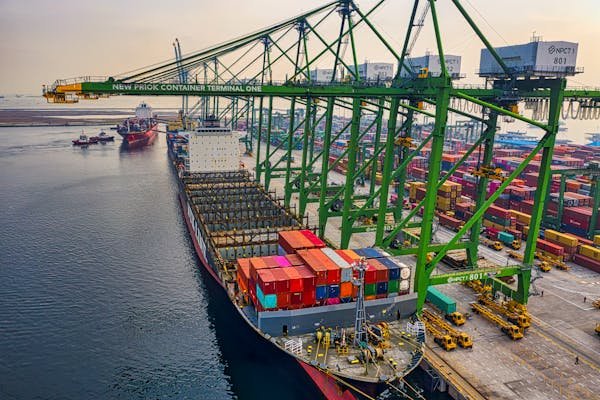Digitization is changing everything, and supply chains are no exception. What used to be manual, slow, and reactive is becoming automated, fast, and data-driven. But how far along are we? How digitized are today’s supply chains? And more importantly, what do the numbers say?
1. 70% of supply chain leaders have accelerated digital transformation due to recent global disruptions
Why this matters
In the past, digital transformation in supply chains was often slow and cautious. But when the world was hit with disruptions like pandemics, geopolitical tensions, and raw material shortages, supply chain leaders had to move fast. They couldn’t wait anymore. That’s why 70% of them pushed the gas pedal on digitization.
What this shift really means
This sudden push wasn’t just about upgrading software. It was about surviving. Companies quickly moved to cloud systems, automated procurement, demand forecasting tools, and more. And this shift wasn’t temporary—it became the new normal.
Leaders realized that being digital isn’t a bonus—it’s a necessity. Without data and real-time insights, you’re blind. And when you’re blind, delays, shortages, and customer dissatisfaction are just around the corner.
What you should do
If you haven’t already started this journey, now’s the time. Here’s what you can do:
- Start small. Pick one supply chain process that’s manual and time-consuming.
- Move it to a digital platform—something simple, like digital inventory tracking.
- Train your team. Don’t just give them the tools—teach them how to use them.
- Measure impact every month. Is it saving time? Reducing errors?
- Use that win to build momentum. Then move to the next process.
The world is not waiting, and neither should you.
2. 50% of companies now use advanced analytics in supply chain decision-making
Why this is a game changer
Supply chain decisions used to be based on gut feeling or past experiences. But with half of the companies now using advanced analytics, decisions are becoming smarter and faster. They use data models to predict demand, identify risks, and optimize everything from sourcing to delivery.
How it works
Advanced analytics includes things like:
- Predictive analytics (to forecast future demand)
- Prescriptive analytics (to suggest best decisions)
- Descriptive analytics (to understand what happened)
It doesn’t have to be fancy. Even using Excel with proper data inputs is a great start. Over time, you can move to more robust tools like Power BI, Tableau, or supply chain analytics software.
What you can do today
You don’t need a data science team to get started. Here’s how you can use analytics:
- Identify your most common supply chain problems. Maybe it’s late deliveries or excess inventory.
- Start collecting relevant data points. How often does the issue happen? What’s causing it?
- Use dashboards or visual tools to spot patterns.
- Apply basic forecasting using moving averages or trend analysis.
The point isn’t to be perfect—it’s to get better every month. With each improvement, your supply chain becomes stronger.
3. 90% of Fortune 1000 companies have digital transformation initiatives impacting supply chains
What this tells us
When nearly every major company is investing in digital supply chains, it’s a signal. These are the biggest players with the most at stake. If they see digital transformation as critical, it’s something every business—big or small—should pay attention to.
What these initiatives look like
These initiatives aren’t just about buying new software. They often include:
- Redesigning processes from scratch
- Changing supplier relationships
- Creating digital ecosystems with partners
- Building control towers for real-time visibility
This transformation takes time, but it creates long-term value. It reduces waste, improves responsiveness, and boosts customer satisfaction.
What smaller businesses can learn
You don’t need the budget of a Fortune 1000 company to follow in their footsteps. Here’s what you can do:
- Study what they’re doing. Many big companies publish case studies and reports.
- Look at the tools they use—many are available at lower costs or have smaller plans.
- Focus on integration. Can your ERP talk to your warehouse software? Can your sales data influence demand planning?
Don’t try to copy everything. Instead, take their mindset: be proactive, be data-driven, and always look for the next efficiency.
4. Only 43% of supply chain leaders have end-to-end visibility into their operations
Why this is a problem
Imagine driving a car where only one of your headlights works. That’s what running a supply chain without full visibility feels like. It’s risky, stressful, and full of guesswork. That’s the reality for more than half of supply chain leaders today.
When you don’t have end-to-end visibility, small issues can quickly grow into major disruptions. Maybe you don’t know your supplier’s delays until it’s too late. Or maybe you can’t track products once they leave your warehouse. These blind spots cost money—and trust.
What visibility really means
End-to-end visibility means you can track everything, from raw materials to customer delivery. It means knowing what’s happening in real time. This includes:
- Inventory levels across locations
- Shipment tracking at every stage
- Supplier performance and risks
- Order status and delivery timelines
When you have this, you can solve problems before they grow. You can predict delays, re-route shipments, and keep your customers informed.
What you can do to improve it
You don’t need a fancy control tower to get started. Start by mapping your current visibility:
- What parts of your supply chain can you see clearly?
- Where are the gaps?
Then take action:
- Ask your suppliers for regular data updates. Even a shared spreadsheet helps.
- Use simple tracking tools. GPS-based logistics apps are often inexpensive.
- Connect your systems. Your warehouse, ERP, and delivery software should speak to each other.
The goal is to build a clear window into your entire operation. One piece at a time.
5. 80% of supply chain executives plan to invest in digital technologies by 2026
Why this stat matters
When 8 out of 10 executives are planning tech investments, that says a lot. It tells us that digital transformation is not a temporary trend. It’s a strategic move. These executives know that without digital tools, they’ll fall behind fast.
These aren’t just routine upgrades either. These investments are big, bold, and meant to completely reshape how supply chains work.
What kinds of technologies are being adopted
Here’s what executives are putting their money into:
- AI-powered demand planning tools
- Real-time tracking and Internet of Things (IoT) sensors
- Automation for warehouses and fulfillment centers
- Cloud-based platforms for collaboration and data sharing
- Advanced analytics for smarter decision-making
These tools help make supply chains faster, smarter, and more resilient.
How to make smart investments
If you’re thinking about tech investments, it’s important to avoid shiny-object syndrome. Just because something is new or expensive doesn’t mean it’s right for you.
Here’s how to think about it:
- Start with your biggest pain points. What slows you down? Where do errors happen?
- Choose tools that directly address those issues.
- Test before you commit. Most platforms offer free trials or pilot programs.
- Make sure the tool integrates with what you already use.
Also, don’t forget the human side. Technology only works if your team knows how to use it. Budget for training and support, not just the software itself.
By 2026, the tech gap between companies will be huge. Make sure you’re on the right side of it.
6. 64% of organizations use cloud-based supply chain solutions
What’s driving this trend
Cloud-based solutions are changing how supply chains operate. Why? Because they’re flexible, fast, and accessible from anywhere. You don’t need to install anything on local machines. You just log in and get to work.
That’s why nearly two-thirds of businesses are already using the cloud for their supply chains. It helps them stay agile, adapt quickly, and collaborate better.
The real benefits of going cloud-based
Here’s what cloud platforms bring to the table:
- Real-time data access from any location
- Easier collaboration with suppliers and partners
- Lower infrastructure costs (no servers to maintain)
- Regular updates without manual installations
- Scalability—you can grow without changing systems
This is especially helpful for companies with remote teams or multiple locations.
How to start using cloud solutions
If you’re still using spreadsheets or old desktop software, here’s how to move to the cloud:
- Identify a process that would benefit most—maybe inventory management or order processing.
- Choose a cloud tool that fits your needs. Tools like NetSuite, SAP Business One, or even Zoho Inventory are great places to start.
- Test it with a small team or single location first.
- Roll it out gradually, with plenty of training.
Security is another big concern. But most cloud providers offer strong protection, backups, and compliance standards. Just be sure to choose a reputable vendor.
The cloud isn’t just a trend—it’s the new standard. And it’s helping supply chains become more connected than ever before.
7. 30% of companies have implemented AI or machine learning in supply chain processes
Why AI is a game-changer
Artificial intelligence and machine learning used to sound like science fiction. But today, they’re very real, and they’re changing how supply chains work. With 30% of companies already using these technologies, the shift is happening faster than many expected.
AI can spot patterns, predict outcomes, and even make decisions faster than any human can. That’s why companies are using it in everything from demand forecasting to warehouse automation.
Where AI is being used
Here are some areas where companies are seeing real results from AI and ML:
- Predicting customer demand with high accuracy
- Optimizing delivery routes in real time
- Detecting fraud or supplier risks before they cause damage
- Automating repetitive tasks like data entry and invoice matching
- Managing inventory based on predictive trends
The best part? AI learns over time. The more data you feed it, the smarter it gets. That means your supply chain decisions keep getting better.
How you can get started with AI
You don’t need to hire a team of data scientists right away. Here’s a simple path to begin:
- Choose one use case. Maybe it’s demand forecasting or supplier risk analysis.
- Look for AI tools built for that. There are platforms like Llamasoft, o9 Solutions, or even basic AI features in ERPs.
- Feed it quality data. AI is only as good as the information it receives.
- Test results against human decisions. Does AI perform better? Is it faster? More accurate?
- Keep improving. AI needs ongoing data and feedback to improve.
Think of AI as a smart assistant—it’s not here to replace people, but to make them better at their jobs.
8. 55% of supply chains are leveraging IoT for real-time monitoring
What IoT brings to the table
The Internet of Things (IoT) is one of the most powerful tools for supply chains today. It connects physical devices—like sensors, trackers, and scanners—to the internet. This allows companies to get real-time data from across their operations.
With 55% of supply chains already using IoT, the trend is clear. Businesses want real-time updates, and IoT makes that possible.
How companies are using IoT
Here are some practical examples:
- GPS trackers on trucks and containers
- Temperature sensors in cold-chain logistics
- RFID tags to monitor stock levels in warehouses
- Motion sensors to track worker safety and productivity
- Smart shelves that report stock-outs automatically
These devices constantly send data back to central systems. That means fewer surprises, faster responses, and more efficient operations.
How to implement IoT in your supply chain
Getting started with IoT doesn’t have to be complicated. Here’s a step-by-step approach:
- Identify what data you wish you had. Is it location tracking? Temperature monitoring? Stock levels?
- Pick one area to start. Cold-chain logistics or warehouse inventory are common starting points.
- Choose the right hardware—GPS trackers, RFID tags, or Bluetooth sensors.
- Connect them to your existing systems using IoT platforms or middleware.
- Set alerts for key thresholds. For example, if a container goes off-route or gets too warm, you’ll know immediately.
Over time, the goal is to build a fully connected supply chain. One where everything talks to everything—and you’re never in the dark.
9. 20% of manufacturers have adopted digital twin technology in logistics
What is a digital twin?
A digital twin is a virtual model of a physical process, product, or system. In supply chains, it means creating a real-time digital copy of your entire logistics operation. This copy lets you simulate changes, predict outcomes, and test scenarios without affecting the real world.
Right now, 1 in 5 manufacturers are already using this tech. And it’s growing fast.
Why digital twins matter
Think about how pilots use simulators before flying. That’s what digital twins offer to supply chain leaders. You can simulate what happens if a port shuts down or a supplier fails. You can test new warehouse layouts or shipping routes. And all without risking delays or extra costs.
Here’s what digital twins help with:
- Scenario planning for disruptions
- Optimization of delivery routes
- Simulation of supplier network changes
- Forecasting the impact of policy or demand shifts
- Identifying bottlenecks before they happen
It’s like having a crystal ball for your supply chain.
How to create your first digital twin
It sounds high-tech, but getting started doesn’t have to be. Here’s how:
- Pick a small, defined process—like your shipping network or warehouse flow.
- Map it out in detail. What are the inputs, outputs, delays, and touchpoints?
- Use simulation tools like AnyLogic, Siemens Tecnomatix, or even Unity-based platforms.
- Feed it real data and see how it behaves under different scenarios.
- Use the insights to make changes in your actual operations.
As you get more comfortable, expand the digital twin to other areas. Eventually, you’ll have a full mirror of your supply chain—one that helps you see problems before they happen.
10. 75% of supply chain disruptions are better managed with digitized systems
Why digital systems improve disruption response
Disruptions in the supply chain are not a matter of “if”—they’re a matter of “when.” It could be a factory fire, a blocked canal, a global pandemic, or simply a storm delaying deliveries. These disruptions hurt, but companies that have digital systems in place manage them far better. That’s why 75% of disruptions are handled more effectively with digitized processes.
Digitization doesn’t prevent disruptions, but it helps you respond faster, make smarter decisions, and reduce the overall impact.
What digitized systems offer during a crisis
When your systems are digital, you gain several key advantages:
- Real-time visibility into delays, stockouts, or supplier issues
- Faster internal communication and team alignment
- Automated alerts and workflows for critical issues
- Data-driven forecasting for recovery planning
- Better communication with customers and suppliers
All of these benefits reduce reaction time—and in a crisis, time is everything.
How to prepare for disruptions with digitization
If your supply chain still depends heavily on manual steps or outdated systems, here’s how to begin strengthening your response strategy:
- Start with your risk-prone areas. Where have disruptions hit you hardest in the past?
- Add digital tracking and reporting for those functions. Even a basic shared dashboard can help.
- Set up automatic alerts. If inventory drops below a certain point or a shipment is late, your system should notify the right people instantly.
- Document escalation processes. Who acts first? What decisions are pre-approved? Put this into a digital workflow to cut down on confusion.
- Test regularly. Run simulations every quarter. The more you rehearse digitally, the more ready your team will be.
A crisis is not the time to figure things out. With digital tools, you don’t have to. You’ll already know what to do.
11. 58% of logistics companies use predictive analytics to optimize routes
The shift from static to smart
Gone are the days of planning delivery routes based on tradition or gut feeling. Today, logistics companies are using predictive analytics to find the best routes in real time. That’s how 58% of them are reducing delivery times, cutting fuel costs, and improving on-time performance.
Predictive analytics uses data—like traffic history, weather patterns, delivery windows, and fuel prices—to choose the smartest routes possible.
How predictive analytics works in routing
Here’s how the process usually unfolds:
- Historical data is collected from past deliveries.
- External data like weather forecasts, road conditions, and construction alerts are added in.
- Machine learning models analyze everything and suggest optimal routes.
- The system continuously updates as new data comes in.
The result? Fewer delays, less wasted fuel, and happier customers.
How to bring predictive analytics into your logistics
You don’t need to build an AI model from scratch to get these benefits. Here’s how you can use this strategy right away:
- Use GPS-based routing tools that already include predictive features. Apps like Routific, OptimoRoute, and Fleet Complete are user-friendly.
- Track your actual delivery performance—delivery times, delays, and fuel usage—and feed that data into your tools.
- Train your drivers or third-party partners on how to use dynamic routing suggestions.
- Set a baseline performance metric, then compare results monthly to measure improvement.
The key is to stop planning routes based only on the past. Let your data guide you to better decisions every day.
12. 45% of supply chain leaders have adopted robotic process automation (RPA)
What is RPA and why it matters
Robotic Process Automation, or RPA, refers to software bots that perform repetitive digital tasks. These aren’t physical robots—they’re virtual assistants that handle routine tasks like copying data, processing orders, or generating reports.
Nearly half of all supply chain leaders now use RPA to improve speed, reduce errors, and free up time for more strategic work.
Where RPA fits in the supply chain
Here are some common areas where RPA makes a difference:
- Processing purchase orders
- Updating inventory systems
- Managing invoices and payments
- Pulling reports from multiple systems
- Sending status emails to customers or vendors
Instead of having a person do these things manually every day, RPA bots can do it faster—and without getting tired or distracted.
How to start using RPA in your supply chain
You don’t need to be a tech wizard to adopt RPA. Here’s how to get going:
- Make a list of repetitive tasks your team does every week.
- Choose one process that follows the same steps every time, like entering order details from emails.
- Explore RPA platforms like UiPath, Automation Anywhere, or Microsoft Power Automate. Many offer simple drag-and-drop builders.
- Build a small bot for that task, test it, and monitor results.
- If it works well, expand RPA to other functions.
RPA won’t replace your team—it will make them faster and more focused. Let the bots handle the boring stuff so your people can tackle the big problems.
13. 40% of businesses struggle with data integration across digital supply chain platforms
Why integration is the hidden bottleneck
Digitization sounds great—until your systems can’t talk to each other. That’s the issue 40% of businesses face today. They have digital tools, but those tools sit in silos. One platform handles inventory. Another handles procurement. Yet another takes care of logistics. And none of them share data smoothly.
This lack of integration slows down decision-making, creates duplicate work, and often leads to poor customer experiences. You can’t be truly digital if your systems don’t work together.
What data integration should look like
In a well-integrated supply chain, data flows freely between platforms. Here’s what that looks like in practice:
- Your ERP knows what’s happening in your warehouse—automatically.
- Your logistics dashboard updates in real time when a shipment leaves the supplier.
- Procurement and finance systems are linked, so you don’t need to manually enter invoice details.
- Everyone works from the same data, in the same system—or in systems that “talk.”
When integration works, your team spends less time chasing information and more time acting on it.

How to fix integration challenges
Here’s a practical path to reduce data silos and boost efficiency:
- Map your tools – List every software platform used in your supply chain, from procurement to shipping.
- Identify the gaps – Where does data get manually transferred? Where are delays happening?
- Use APIs and middleware – Most modern platforms offer APIs. Middleware tools like Zapier, Boomi, or MuleSoft can connect apps without coding.
- Choose platforms built to integrate – When investing in new tools, make sure they play well with what you already have.
- Focus on clean data – Integration only works if the data is clean and standardized across systems.
You don’t have to connect everything all at once. Start with the biggest pain point—like syncing your ERP and logistics system—and go from there.
14. 65% of companies consider digital supply chain transformation a top strategic priority
Why strategy has shifted
Digital transformation used to be seen as “tech stuff.” It was handed off to IT or operations and treated like an upgrade project. But today, 65% of companies see it for what it really is—a core business strategy.
That’s a major shift. It means CEOs and boards are now paying attention. Digital transformation isn’t just about saving time. It’s about staying competitive, serving customers better, and being ready for what’s next.
What it means to treat digitization as strategic
When companies prioritize digital supply chains at the top level, a few things change:
- Transformation gets real budget, not leftovers.
- Teams from IT, ops, finance, and marketing all get involved.
- Decisions are made with long-term impact in mind, not just quick fixes.
- The focus is on agility, resilience, and data—not just automation.
This strategic mindset turns digital transformation from a project into a culture shift.
How to make it a strategic focus in your company
If you want your supply chain transformation to be taken seriously, here’s how to position it right:
- Link it to business outcomes – Don’t just talk about tools. Talk about faster delivery, lower costs, or better customer satisfaction.
- Get leadership on board – Share case studies, competitor moves, or ROI projections. Make the case that this isn’t optional.
- Build cross-functional teams – Transformation touches every part of the business. Bring in voices from every key department.
- Create a digital roadmap – Show how small steps today build into big wins over time.
- Track progress publicly – Celebrate quick wins. Share milestones with leadership. Keep momentum high.
When digitization becomes a shared goal, not just a task list, the entire organization moves faster—and smarter.
15. 35% of global manufacturers have partially digitized their procurement process
Why procurement is ripe for digitization
Procurement sits at the heart of supply chains. It controls what gets bought, from where, and at what cost. Yet for many years, it was buried in paperwork and emails. Today, 35% of manufacturers have begun to digitize this function—and they’re seeing big benefits.
Partial digitization usually starts with automating quote requests, approvals, and order tracking. Even these small steps make procurement faster, more transparent, and more cost-effective.
What partial digitization typically looks like
Most manufacturers begin digitizing procurement in stages. Here’s how it often unfolds:
- Phase 1: Using online tools for RFQs (requests for quotes)
- Phase 2: Implementing e-signatures and automated approval flows
- Phase 3: Integrating suppliers into procurement platforms
- Phase 4: Real-time order tracking and budget visibility
Each stage adds efficiency and reduces manual work. It also makes it easier to spot supplier delays or cost overruns before they escalate.
How to digitize procurement without disruption
Digitizing procurement doesn’t have to mean overhauling everything overnight. You can do it step by step:
- Audit your current process – Where are the bottlenecks? Where do errors happen?
- Pick a procurement platform – Start simple. Platforms like Coupa, Procurify, or Precoro are user-friendly and affordable.
- Automate approvals and records – Instead of chasing signatures, use workflows with set rules and digital trails.
- Engage suppliers – Invite your vendors to use your system. The smoother the process for them, the faster they’ll adopt it.
- Monitor KPIs – Track supplier lead times, pricing trends, and approval delays. Use this data to improve your process.
The goal isn’t to digitize for the sake of it. It’s to build a procurement function that’s faster, more transparent, and better aligned with the rest of your supply chain.
16. 72% of businesses with highly digitized supply chains report increased customer satisfaction
Why customer satisfaction is tied to digitization
At first glance, supply chains and customer satisfaction might seem far apart. But they’re deeply connected. When your supply chain is fast, reliable, and transparent, your customers notice. That’s why 72% of companies with highly digitized supply chains report happier customers.
It’s not just about speed. It’s about accuracy, communication, and trust. Digitization improves all of those.
How digitization directly improves customer experience
Here’s how it works:
- Orders are fulfilled faster because warehouse and inventory systems are automated.
- Customers get real-time updates on order status, location, and estimated delivery.
- Fewer mistakes are made because systems sync data accurately across platforms.
- Delays or issues are spotted early, giving teams time to respond or inform customers.
- Personalization improves because companies can analyze buying habits and preferences better.
A digitized supply chain becomes a silent partner in keeping your customers happy—and loyal.
How you can connect digitization to customer experience
If customer satisfaction is a top goal for your business, here’s how to align your supply chain with it:
- Map the customer journey – Where does the supply chain affect their experience? Think order confirmation, delivery times, product availability, and returns.
- Focus on delivery performance – Use software that offers tracking, auto-notifications, and delivery confirmations.
- Reduce stockouts – Sync inventory across all your systems so you never promise what you can’t deliver.
- Handle issues proactively – Set up alerts for delays and notify customers before they ask. That builds trust.
- Ask for feedback – Include a supply chain-focused question in your surveys, like “How satisfied were you with the delivery experience?”
Customers might not know your systems are digital. But they’ll feel the difference in how smooth, fast, and reliable everything becomes.
17. 28% of supply chains currently use blockchain technology for traceability
Why traceability is more important than ever
Consumers and regulators are demanding transparency like never before. They want to know where products come from, how they were made, and how they moved across the globe. That’s where blockchain comes in.
While still emerging, 28% of supply chains already use blockchain to create secure, transparent records of every transaction, shipment, and touchpoint. This improves trust, reduces fraud, and helps meet compliance requirements.
How blockchain works in supply chains
Blockchain creates a digital ledger—a shared record that can’t be changed without everyone knowing. In supply chains, this helps in:
- Tracking the origin of raw materials
- Verifying certifications or compliance (like fair trade or organic labels)
- Reducing counterfeit goods
- Enhancing recalls with precise product tracing
- Sharing real-time data with suppliers and customers securely
Because the record is permanent and decentralized, it’s harder to tamper with—and easier to audit.
How to explore blockchain for your supply chain
You don’t have to be a tech expert to begin experimenting with blockchain. Here’s how to get started:
- Identify a traceability pain point – Are there products that need to meet strict sourcing or compliance standards?
- Start with a pilot project – Many platforms like IBM Food Trust, VeChain, and Provenance offer blockchain solutions for specific use cases.
- Choose a single product or supplier – Test blockchain tracing with one part of your supply chain before scaling.
- Involve your partners – Blockchain works best when everyone is involved—suppliers, logistics providers, and retailers.
- Use it for storytelling – If your data shows sustainability or ethical sourcing, share that with your customers. It builds trust and brand value.
Blockchain isn’t just a buzzword—it’s a practical tool for building trust in an age of skepticism.
18. 60% of companies using digital supply chains report reduced operational costs
How digitization saves money
Supply chains are expensive to run. From procurement and production to logistics and inventory, every step involves costs. The good news? Digitization helps reduce many of these costs without cutting corners.
In fact, 60% of companies that go digital report real savings. These don’t come from a single change—they come from dozens of small improvements that add up over time.
Where the cost savings come from
Let’s look at the key areas where digitization brings down costs:
- Inventory – Real-time tracking reduces overstocking and stockouts, saving storage and capital costs.
- Labor – Automation handles repetitive tasks, so your team can focus on higher-value work.
- Procurement – Digital platforms make it easier to compare prices, negotiate better deals, and reduce errors in ordering.
- Logistics – Route optimization tools lower fuel costs and cut delivery times.
- Returns – Better demand forecasting and product accuracy reduce the cost of handling returns.
Even small changes—like automating data entry or using digital signatures—can lead to major cost reductions over time.

How to start cutting costs through digitization
You don’t need to make sweeping changes to start saving. Here’s how to approach it:
- Audit your top expenses – Look at your supply chain costs and find the biggest pain points.
- Automate low-value tasks – Start with things like invoice matching, inventory checks, or order confirmations.
- Digitize your procurement – Use a platform to compare vendors and prices, track spending, and reduce errors.
- Monitor in real time – Use dashboards to track inventory levels, order status, and delivery performance. The faster you spot a problem, the cheaper it is to fix.
- Benchmark and improve – Compare your costs before and after digitization. Use the savings to reinvest in better tools.
Digitization isn’t just about working faster. It’s about working smarter—and spending less to do more.
19. 50%+ of global organizations have invested in supply chain control towers
What is a supply chain control tower?
A supply chain control tower is like a mission control center. It gives you a real-time, bird’s-eye view of your entire supply chain—across suppliers, logistics, warehouses, inventory, and customer orders. More than half of global organizations have now invested in these systems to boost visibility, responsiveness, and efficiency.
Instead of reacting to problems after they happen, companies with control towers can predict issues and act early. That’s the power of centralized, real-time data.
What control towers actually do
They’re not just dashboards. A modern control tower helps you:
- Monitor inventory levels across all locations in real time
- Track shipments across borders and carriers
- Predict supply disruptions using external data like weather or geopolitical alerts
- Coordinate actions across teams using live updates
- Set up alerts for delays, shortages, or order exceptions
It pulls data from multiple systems into one interface, so your team can see everything at once—and act faster.
How to implement a control tower approach
Even if you’re a smaller company or just getting started with digitization, you can apply the control tower concept in phases:
- Identify critical metrics – What do you need to see every day to manage operations effectively? Start with order status, inventory, and shipments.
- Centralize data – Use tools like Power BI, Tableau, or a dedicated control tower solution to bring data from different sources into one place.
- Automate alerts – Set up rules to flag issues like stockouts, late deliveries, or demand spikes.
- Make it visible – Set up large screens in your operations area or give teams access to dashboards so everyone stays aligned.
- Review and refine – Meet weekly or monthly to review what your control tower is telling you. Tweak your setup to focus on what matters most.
Think of your control tower as your eyes and ears. With it, you make smarter decisions faster—and prevent problems before they spiral out of control.
20. 47% of retailers have digitized inventory tracking
Why inventory tracking is critical
Inventory is one of the most sensitive parts of any supply chain. If you carry too much, your cash flow suffers. Too little, and you risk losing sales. That’s why almost half of retailers have made the move to digital inventory tracking.
Manual systems just can’t keep up anymore. Paper logs, spreadsheets, and delayed updates lead to overstocking, understocking, or completely missing inventory. Digitization helps solve these issues.
What digital inventory tracking actually does
Digital tracking systems use barcodes, RFID, and integrated software to give you:
- Real-time inventory levels across all locations
- Automated stock updates when items are received, sold, or returned
- Insights into fast- and slow-moving products
- Alerts for reorder points or shortages
- Integration with eCommerce, POS, and warehouse systems
This means less manual work, fewer errors, and faster decisions.
How to digitize your inventory
Here’s how to make the move to smarter inventory management:
- Choose a tracking system – Tools like TradeGecko, Cin7, Zoho Inventory, or QuickBooks Commerce are great for small to mid-sized operations.
- Use barcodes or RFID – Label all products and locations with scannable codes for real-time updates.
- Train your staff – Make sure your team uses scanners consistently during receiving, stocking, and shipping.
- Integrate with sales and purchasing – Link your inventory system to your POS or eCommerce platform so stock updates automatically.
- Set up thresholds – Use the system to alert you when it’s time to reorder or when stock is nearing expiry.
A digitized inventory system gives you peace of mind. You’ll know what you have, where it is, and when to move it—without guessing.
21. 25% of companies have real-time shipment tracking for all modes of transport
Why shipment tracking matters more than ever
Customers today expect to know where their orders are at every moment. Businesses need that same visibility. That’s why a quarter of companies now track shipments in real time—whether it’s by truck, ship, plane, or rail.
This level of visibility helps reduce uncertainty, respond to delays, and improve customer service.
What full shipment tracking looks like
When done well, real-time tracking provides:
- Live GPS data from carriers or third-party logistics (3PL) partners
- Estimated arrival times that update with traffic or weather changes
- Automatic status changes when a delivery is picked up, delayed, or delivered
- Exception alerts for issues like route changes or customs holdups
- A single dashboard to view all shipments regardless of carrier
This isn’t just about knowing where things are—it’s about reducing stress and improving accuracy.
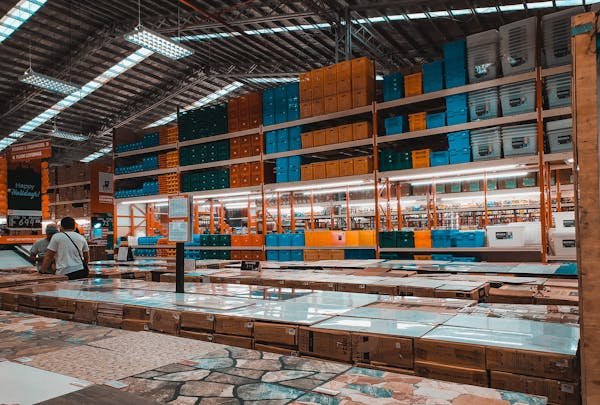
How to adopt real-time tracking for your business
You don’t need a fleet of trucks to get started. Here’s how to bring real-time visibility into your shipping process:
- Work with tracking-enabled logistics partners – Many 3PLs and courier services now offer live tracking by default.
- Use transportation management software (TMS) – Tools like FourKites, Project44, or Shipwell integrate with carriers and centralize tracking.
- Offer tracking links to customers – Share tracking updates via email or SMS to improve transparency.
- Set up internal alerts – If a shipment falls behind schedule, your team should know immediately—so they can take action.
- Analyze delivery performance – Use historical tracking data to review how carriers are performing over time.
Real-time tracking turns delivery into a strength instead of a headache. It also gives you the data to continuously improve.
22. 67% of organizations have adopted supply chain collaboration tools
Why collaboration tools matter
Supply chains don’t run in silos. They involve multiple departments, suppliers, logistics partners, and customers—all needing access to information and communication. That’s why 67% of organizations are now using collaboration tools specifically built for supply chain management.
These tools reduce email overload, speed up decision-making, and create more alignment between teams. When everyone is on the same page, everything flows better.
What collaboration tools actually do
Modern supply chain collaboration platforms help you:
- Share updates instantly across departments and partners
- Track changes in procurement, shipping, or demand in real time
- Centralize communication around orders, inventory, or shipments
- Create shared dashboards for cross-team visibility
- Collaborate on documents like forecasts, invoices, or delivery plans
They’re designed to eliminate misunderstandings and wasted time caused by disconnected systems or long email threads.
How to start using collaboration tools
Here’s how to bring more alignment and speed into your supply chain communication:
- Pick the right tool – Tools like Slack, Microsoft Teams, Trello, Asana, and supply-chain-specific platforms like E2open or Kinaxis offer strong collaboration features.
- Create shared workspaces – Set up channels or projects around key workflows (like inbound shipments, production schedules, or returns).
- Assign ownership – Every task or conversation should have a clear owner to avoid delays.
- Use shared dashboards – Let teams view the same real-time metrics, so no one’s working from outdated information.
- Standardize communication – Set ground rules. Use clear tags, templates, or structured updates to reduce back-and-forth.
The more your teams collaborate in real time, the faster you’ll be able to respond to changes—and the fewer surprises you’ll face.
23. Only 36% of businesses can model supply chain scenarios digitally
Why scenario modeling is essential
Supply chains face endless “what ifs.” What if demand spikes? What if a supplier shuts down? What if fuel prices double? Businesses that can model these scenarios ahead of time are better prepared—and more confident in their decisions.
But only 36% of businesses have this capability today. That means most are still reacting instead of preparing. Digital scenario modeling helps you test ideas, predict outcomes, and reduce risk.
What digital scenario modeling looks like
Scenario modeling lets you build digital “what-if” simulations across your supply chain. You can:
- Test the impact of a supplier disruption on lead times
- Simulate a price increase and its effect on margins
- Forecast the results of expanding a warehouse or changing a route
- Analyze seasonal demand shifts or regulatory changes
- Plan for labor shortages or equipment downtime
This helps you make better decisions without the risk of trial and error in real life.
How to build scenario modeling into your supply chain
Even if you’re not yet using advanced modeling software, you can begin simulating key scenarios:
- Start simple – Use spreadsheets to simulate basic what-if cases, like demand surges or shipping delays.
- Use planning platforms – Tools like Llamasoft, Anaplan, o9, or SAP IBP allow advanced modeling with real data.
- Define your assumptions – Every model starts with assumptions. Be realistic and base them on your historical data.
- Run simulations regularly – Don’t wait for a crisis. Make scenario modeling part of monthly or quarterly planning.
- Involve cross-functional teams – Finance, procurement, logistics—all should contribute data and insights.
Scenario modeling is like a flight simulator for your supply chain. It prepares you for turbulence before it hits
24. 48% of firms use automation in their warehouse operations
Why warehouse automation is a big win
Warehouses are the backbone of the supply chain. They handle receiving, storage, picking, packing, and shipping. But they’re also one of the most labor-intensive areas. That’s why 48% of companies have brought in automation to streamline operations and reduce costs.
Automation isn’t just about robots. It includes software, conveyor belts, barcode scanners, and smart shelves—all working to make things faster, safer, and more accurate.
What warehouse automation looks like
Here’s what companies are using to modernize their warehouse operations:
- Automated picking systems that guide workers with lights or voice commands
- Robotic arms that handle heavy or repetitive tasks
- Barcode scanners and RFID for real-time inventory updates
- Conveyor belts and sortation systems to move goods faster
- Warehouse Management Systems (WMS) that optimize storage, picking routes, and space usage
These tools reduce human error, speed up fulfillment, and improve worker safety.

How to introduce automation to your warehouse
You don’t need to build a robot army overnight. Start small and scale smart:
- Assess your pain points – Are you struggling with picking errors, slow fulfillment, or frequent stockouts? Start there.
- Automate one process – Barcode scanning is a simple first step with huge impact. Picking optimization tools can be next.
- Use a WMS – Implement a warehouse management system that supports automation and gives you real-time control over your operations.
- Train your team – Don’t skip this. Even simple automation tools require change management and hands-on training.
- Measure ROI – Track improvements in speed, accuracy, and cost. Use the data to justify expanding automation further.
Even a little automation can make your warehouse more productive and profitable. Over time, these gains compound—and your entire supply chain becomes faster and more flexible.
25. 33% of companies use digital platforms for supplier relationship management
Why supplier management is evolving
Your supply chain is only as strong as your suppliers. When relationships with vendors are managed manually—through endless emails, outdated spreadsheets, and inconsistent communication—things break down fast.
That’s why 33% of companies now use digital platforms to manage supplier relationships. These platforms help standardize communication, track performance, and ensure everyone is working from the same data.
What digital supplier management actually does
Supplier relationship management (SRM) platforms help you:
- Store and update supplier contact details, contracts, and certifications
- Monitor vendor performance—on-time delivery, pricing accuracy, quality
- Manage risk and compliance through real-time data sharing
- Streamline quote requests, order status, and invoice tracking
- Strengthen collaboration and trust by improving transparency
Whether you work with 5 suppliers or 500, a digital approach makes supplier relationships more productive—and less stressful.
How to digitize your supplier relationships
You can improve your supplier relationships without major disruption. Here’s how to get started:
- Centralize supplier data – Use a cloud-based tool or spreadsheet to track contacts, terms, past orders, and communication history.
- Set performance metrics – Define clear KPIs like on-time delivery rates, error rates, or cost deviations.
- Automate communications – Use platforms like SAP Ariba, Gatekeeper, or Kissflow Procurement Cloud to manage RFQs, POs, and invoices.
- Conduct regular reviews – Use dashboards to identify underperforming suppliers and hold quarterly performance calls.
- Encourage collaboration – Involve suppliers in your forecasting or planning process, especially for long-term partners.
Digital SRM isn’t just about efficiency. It’s about building healthier, more transparent relationships with the businesses you rely on most.
26. 44% of companies with digitized supply chains report faster decision-making
Why speed is the real edge
In supply chain management, time is everything. The faster you can make informed decisions, the better you can avoid delays, cut costs, and respond to customer needs. That’s why nearly half of companies with digitized supply chains say decision-making has become quicker and more confident.
Digital tools reduce guesswork. They give teams the data, insights, and alerts they need to act fast—and act right.
What faster decision-making looks like in practice
Here are a few examples:
- A supply planner sees a spike in demand through a dashboard and can approve a rush order within minutes.
- A logistics manager gets an alert about a delayed truck and reroutes inventory immediately.
- A finance leader sees spending trends in real time and puts a hold on non-critical procurement.
These decisions don’t get stuck in email threads or buried in spreadsheets. They happen live—and they stick.
How to make decisions faster with digitization
Here’s how to build a supply chain that’s not just smart, but fast:
- Connect your systems – Make sure your ERP, inventory, procurement, and logistics tools share data in real time.
- Set up real-time dashboards – Use tools like Tableau, Power BI, or Google Data Studio to track KPIs daily.
- Create role-based alerts – Don’t flood everyone with every update. Send the right data to the right people at the right time.
- Reduce approval steps – Use digital workflows with automated rules to approve common tasks instantly.
- Empower teams – Train employees to read the data and act on it without waiting for layers of sign-off.
A digitized supply chain doesn’t just run better. It lets you move fast, fix problems early, and stay ahead of the curve.
27. 61% of businesses claim digitization improved supply chain agility
Why agility is the new superpower
Supply chains used to be about scale—now they’re about agility. The ability to shift, adapt, and respond quickly to change is what sets successful companies apart.
That’s why 61% of businesses that have gone digital say it’s made their supply chains more agile. They can shift sourcing, reroute shipments, update forecasts, and change production schedules without chaos.
What agility looks like in a digital supply chain
Here’s how agile, digitized supply chains respond to change:
- A sudden drop in sales? Forecasting tools adjust demand signals and reduce overproduction.
- A supplier fails? SRM platforms identify backup vendors quickly and automate onboarding.
- A shipping route closes? Real-time logistics systems suggest alternative carriers and routes.
- Market demand shifts? Inventory levels and pricing updates happen within minutes.
This kind of agility protects profits, improves customer satisfaction, and strengthens resilience.
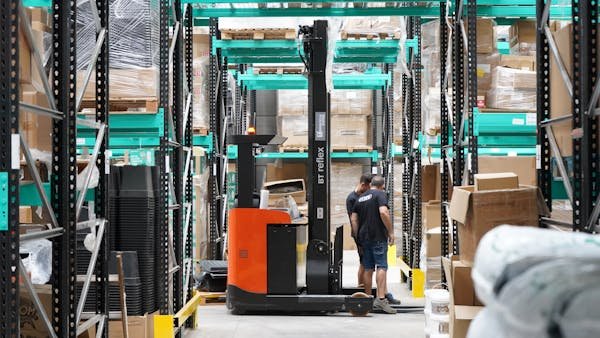
How to build agility through digitization
If your supply chain feels rigid or reactive, here’s how to make it more agile:
- Digitize your core functions – Start with forecasting, inventory management, and procurement.
- Create flexible workflows – Use software that lets you update orders, routes, or production schedules in real time.
- Invest in supply chain visibility – You can’t respond fast if you don’t know what’s happening. Use dashboards and alerts to see bottlenecks early.
- Build in redundancy – Digital tools help you manage multiple suppliers, carriers, and fulfillment centers, so you’re never stuck with just one option.
- Run simulations – Use scenario modeling to test how your supply chain reacts to common disruptions.
Agility is no longer optional. It’s the foundation of a modern, competitive supply chain—and digitization is the fastest path to get there.
28. 38% of firms have implemented sustainability tracking through digital tools
Why sustainability and digitization go hand in hand
Sustainability is no longer just a marketing angle—it’s a business imperative. Governments are enforcing regulations, consumers are demanding transparency, and investors are pushing for greener operations.
That’s why 38% of companies now use digital tools to track and improve sustainability metrics in their supply chains. These tools provide hard data on emissions, waste, energy use, and ethical sourcing—turning sustainability from guesswork into action.
What digital sustainability tracking looks like
Here’s how companies use tech to monitor and reduce their environmental impact:
- IoT sensors track energy usage or fuel consumption in real time.
- Carbon calculators estimate emissions based on shipping modes and distances.
- Digital platforms verify compliance with sustainability certifications.
- Supply chain mapping tools expose sourcing risks—like deforestation or unethical labor.
- Reporting tools generate ESG reports for stakeholders and regulators.
Digitization makes it possible to measure what matters—and then do something about it.
How to start tracking sustainability digitally
Sustainability doesn’t have to start with sweeping changes. Small digital steps make a big difference:
- Map your supply chain – Understand where your materials and products come from, and which partners pose environmental risks.
- Measure key metrics – Start with carbon emissions, energy use, or packaging waste. Use digital tools like EcoTransIT, Sphera, or even Microsoft Cloud for Sustainability.
- Track supplier practices – Ask vendors to share sustainability data or certifications. Store this in your SRM platform.
- Automate reporting – Use dashboards to track progress and generate sustainability reports quarterly.
- Use insights to improve – Switch to greener suppliers, optimize transportation, or reduce packaging waste based on your data.
When you digitize sustainability, you turn it from a talking point into a competitive advantage.
29. 57% of supply chain professionals say data quality is a barrier to full digitization
Why data quality makes or breaks digitization
Digital tools are only as good as the data they run on. If your data is inaccurate, outdated, incomplete, or inconsistent, then your software, dashboards, and reports will mislead you. And that’s why 57% of supply chain professionals see poor data quality as their biggest roadblock.
Digitization is not just about adopting tools—it’s about cleaning up the information that feeds them.
What poor data quality looks like
Here are a few signs that your data may be holding you back:
- Inventory records don’t match physical counts
- Supplier info is missing or duplicated
- Product codes vary across systems
- Forecasts are wildly inaccurate due to old sales data
- Manual re-entry causes repeated errors
Every one of these slows down your digital progress and leads to poor decisions.
How to improve your data for better digitization
Getting your data in order doesn’t require perfection—it requires a consistent process:
- Audit your data – Identify where the biggest errors or inconsistencies happen. Look across systems like ERP, WMS, and procurement tools.
- Clean and standardize – Use naming conventions, product coding standards, and date formats across all platforms.
- Automate where possible – The fewer manual entries, the fewer errors. Use data validation rules or import features.
- Create a single source of truth – Centralize key data in a master system or database. Make it the go-to place for updates.
- Set ownership – Assign people or roles to maintain data quality in each department. Data governance isn’t optional anymore.
Good data is the foundation of a powerful digital supply chain. Without it, even the best tech won’t deliver results.
30. 85% of digital supply chain leaders report improved forecast accuracy
Why forecasting is still the holy grail
No matter how advanced your supply chain becomes, forecasting remains the core of everything. You need to know what’s coming—so you can plan inventory, staffing, production, logistics, and cash flow.
The good news? 85% of companies that lead in digital transformation say their forecasts are now significantly more accurate. That leads to less waste, fewer stockouts, and better customer service.
How digitization improves forecasting
Here’s what these companies are doing differently:
- Using machine learning to detect hidden trends
- Pulling real-time data from sales, marketing, and inventory
- Factoring in external signals like market data, weather, and economic indicators
- Running multi-scenario models to prepare for uncertainty
- Continuously updating forecasts based on the latest numbers
Forecasts are no longer static spreadsheets. They’re living, breathing systems.

How to improve your own forecasting accuracy
You don’t need advanced AI to start getting better forecasts. Just follow these steps:
- Consolidate your data – Get sales, inventory, and supplier data in one place. That’s the baseline.
- Use simple models first – Moving averages or regression models in Excel are a great place to start.
- Check accuracy every month – Compare forecast vs. actual and adjust your inputs.
- Bring in real-time feedback – Add recent trends, promotions, or supply delays into your forecast inputs.
- Scale up over time – Once you trust your data, you can move to forecasting tools like Demand Works, Anaplan, or Netstock.
Better forecasts mean fewer surprises—and a supply chain that feels less like firefighting and more like orchestration.
Conclusion:
We’ve covered 30 critical stats—and what each one really means for your supply chain. Whether it’s improving visibility, using predictive analytics, or automating warehouse tasks, the message is clear: digitization is no longer a luxury. It’s the standard.

